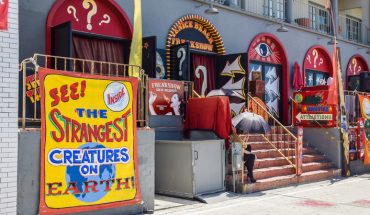I hate to be bored. And always want to do new things and make new things happen.
So I’ve always been involved with research. I started aged 18 as an IT researcher prior to managing computer systems, electronics, avionics and atomic research for the government. Nowadays I fund medical research in autism spectrum disorders.
Despite the vastly different fields – the basic research journey is generic: discover – gather – analyse – create – share.
How does a lay person like me ensure that medical research grants are well directed? You’d think it would be easy but it’s an ongoing journey to learn how to give money away wisely.
I went out of my way to serve for over two years as a trustee of the American research charity which later became Autism Speaks before setting up Autistica as now the leading autism research charity in the UK. As I learnt how to professionalise it, the Association of Medical Research Charities (AMRC) was crucially important, and I was mightily in awe of the 40 or so questions on its membership application form. They were all good due diligence things to ensure that research is of good quality.
The AMRC is an organisation of 133 leading medical and health research charities in the UK, which together spend £1.3bn on research. There are also some selected supporters such as the British Library, one of the world’s greatest research libraries. The nearest US equivalent is the AFMR (American Federation for Medical Research) which also has a focus on developing leaders.
To ensure high standards, the AMRC audits members’ processes every five years; and insists members follow its principles about peer review and strict policies on animal research. I have done consultancy for an abattoir, where the cows walked in one end and meat products came out the other – it turned me vegetarian, but only for a couple of months – and I have seen primate testing laboratories and personally funded work with mice and rats. Everything I’ve seen has been well regulated and following the three R’s:
- Replacement (by non-animal methods, possibly computer modelling);
- Reduction (efficiency really, using fewer animals, getting more information from each animal); and
- Refinement (animal welfare to minimise and ease pain).
* * * *
Autistica, I am proud now to be its President, took five years to achieve membership partly because of the AMRC’s demand for ever higher standards in its membership. It was so frustrating that each time we thought we had met all the requirements, a new one seemed to be added. The first requirement Autistica had to meet was to have its own Research Director, something we didn’t have in the early years. Then we had to have a published research strategy which we achieved in 2009. And finally, we had to have issued and completed a call for proposals. That was achieved in 2010 and was the qualifier for Autistica’s AMRC membership.
The Association is the strong collective voice for medical research and health charities in the UK and is a world leader in medical research and AMRC members collectively invest – mainly to British universities – more than either the Medical Research Council or the National Institute for Health Research. It ensures that research funding is well directed and focussed on improving lives.
Additionally, the Association helps to sustain public generosity by having its members learn to demonstrate how research helps people. We have all seen the improvements in survival rates for many forms of cancer; we have all heard (if not learnt) the ways in which we can protect our hearts, and we now understand the significant impact of our genetic make-up. These are all products of research.
People give blood and donate organs, people give time and skills; people provide services and make introductions. And they give money. Donors look to the AMRC as a form of Due Diligence and several grant givers to medical research will only consider supporting AMRC members.
- Autism: Puberty and sexuality - 4th September 2020
- Update on Autistica - 7th May 2019
- Autistica’s Discover Network - 7th December 2018






